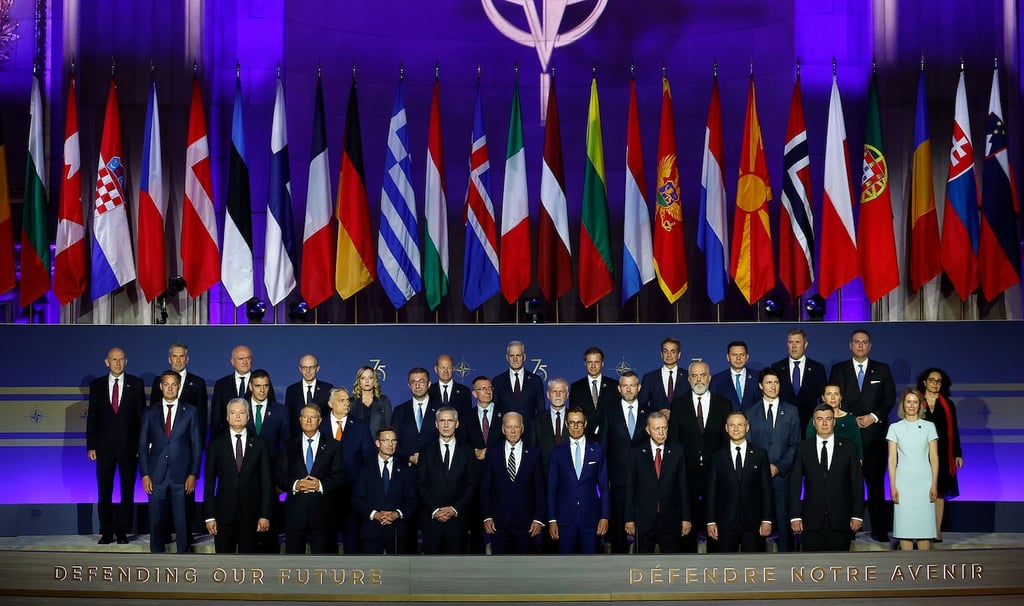NATO at a Crossroads: U.S. Pushes Europe to Take the Lead in Defense
As the U.S. signals troop reductions and demands higher defense spending, NATO faces a pivotal moment. Will Europe step up, or is the alliance heading for a major realignment?
POLITICS
Ke press Global
4/3/20252 min read


NATO’s Future in Question: Europe Faces Pressure as U.S. Shifts Defense Focus
The transatlantic defense landscape is changing. NATO allies are preparing for a significant shift in responsibility as the United States signals that Europe must take on a greater role in defending the continent. This development comes amid warnings from the Trump administration and Secretary of State Marco Rubio, who is attending his first NATO foreign affairs meeting in Brussels.
Rubio’s key message to European allies is clear: the U.S. expects them to shoulder more of the alliance’s security burden. With potential troop reductions of up to 50,000, a demand for increased defense spending, and the possibility of a U.S. strategic pivot toward the Indo-Pacific, NATO’s future is at a crossroads.
A Growing Divide Over Defense Spending
Since 2017, European allies have collectively increased defense spending by approximately €700 billion. However, this is still not enough for the U.S., which is now calling for members to allocate 5% of GDP to defense, a drastic increase from the current 2% target.
For wealthier NATO members like Germany and France, this may be an achievable goal, but for nations like Spain, Italy, and Belgium—who have yet to meet even the 2% benchmark—such an increase would be economically devastating.
The core argument from Washington is that Europe must step up so that U.S. forces and equipment can be redeployed to other regions, particularly Asia. However, European leaders argue that a unilateral U.S. withdrawal from its traditional allies would weaken its strategic position, particularly as threats from Russia and China continue to escalate.
The Consequences of U.S. Troop Reductions
Currently, around 100,000 U.S. troops are stationed in Europe, ensuring deterrence and rapid response capabilities. If this number is cut, NATO’s ability to project power and defend its eastern flank will be significantly weakened.
European diplomats have already voiced concerns over the potential unpredictability of a U.S. withdrawal. Some fear that the decision could even be influenced by back-channel negotiations between Washington and Moscow, which would send shockwaves through the alliance.
"If they do it, the U.S. must scale back in an orderly way—we don’t want to read in the press that they’re pulling out," one diplomat stated. "And it would be very dramatic if it was a result of negotiations with Moscow."
Despite the increasing pressure, European leaders remain steadfast in their belief that NATO’s strength lies in unity. "Now is not the time for the U.S. to go it alone," one diplomat emphasized, warning that pivoting entirely to the Indo-Pacific could leave America vulnerable in the long term.
What’s Next for NATO?
While the Trump administration has consistently pushed for stronger European defense commitments, the alliance must now make difficult choices. If European nations fail to meet the U.S.’s demands, NATO could face a major realignment—or even an existential crisis.
The upcoming months will determine whether Europe can rise to the challenge, balancing increased defense capabilities while maintaining diplomatic ties with the U.S. The future of NATO is uncertain, but one thing is clear: the days of American-led European defense may be coming to an end.
© 2025. Ke Press Global. A Ke Harbor Company. All rights reserved.
FOLLOW KE PRESS GLOBAL ON :
Contact us


